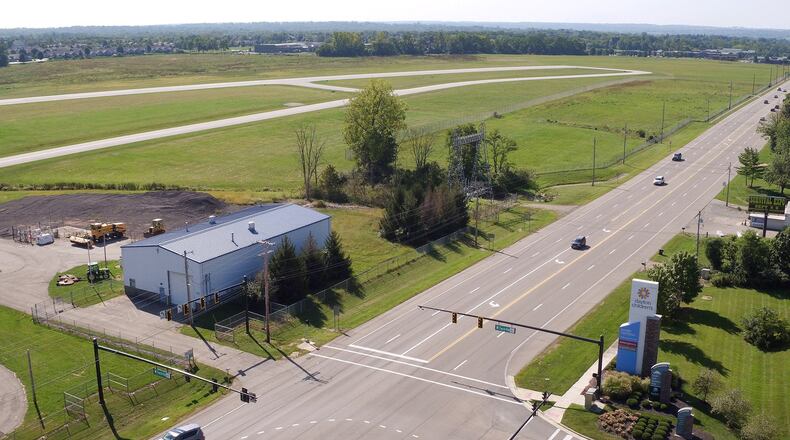Airport officials sought about $1 million for the taxiway work — a phased project expected to cost about $3 million — and plan to re-apply next year, he said.
RELATED: Not your ‘typical’ aircraft hangar; see this local company’s new airport building
“(Officials handing out state funds) only have $6 million, and there’s a hundred airports,” said Slaybaugh, who noted DWB has received about $1 million in state funds the past several years.
“We haven’t done poorly in it. We do get funded. But we don’t get money every year.”
A new taxiway that runs parallel to the runway is needed because the existing alignment does not conform with FAA standards. Work to bury power lines along Ohio 741, meanwhile, should start in October after Dayton City Commission approval, he said.
Crews will be working with about four companies with power transporters in that area as the project seeks to eliminate aircraft obstructions near the south end of the runway, Slaybaugh said. It is being financed through a state grant of about $500,000, he said.
RELATED: Dayton, Ohio airports help fuel jobs: See how area bases compare
Both the taxiway and power line projects are part of the airport’s recently approved new layout plan. A key element of the plan green-lighted by the FAA last month is a 500-foot extension of the runway, a project years away that might lead to realigning Austin Boulevard to the north.
The airport at the intersection of Ohio 741 and Austin is responsible for about 320 jobs, an annual payroll of $10.7 million and a yearly economic output of nearly $36 million, according to an Ohio Department of Transportation study.
The new plan is key to maintaining a safe environment as well as “to serve as a guide to future funding requests,” airport records show.
DWB “will need to provide the FAA justification of need before seeking FAA financial participation in” projects including taxiways east and west of the 5,000-foot runway, according to federal records.
RELATED: Change allows taller buildings at Dayton-Wright Brothers Airport
The plan approved last month calls for “aviation related development” in that area near the state route, as well as on the runway’s east side near Austin Boulevard. It also outlines “non-aviation development” along the site’s northeast land bordering Washington Twp.
Trees and other vegetation have been eliminated in those areas because of their height and proximity to the runway, Slaybaugh has said.
Studies and discussions on future land use have involved the Miami Twp.-Dayton Joint Economic Development District Board and Washington Twp.
A report by Juniper CRE Solutions examining the “highest and best” use of land east of the runway — potentially as much as 80 acres — recommended flex research and development, plus light industrial use.
RELATED: Study: Miami Twp. land near airport could lure defense businesses
Those uses present “an excellent opportunity for the township to capitalize on the strong aviation and defense sectors present in the Dayton market and capture the higher paying wages that come with these types of sectors,” according to the study.
A second study, by LJB Inc., outlines options for that land that all include a light industrial park housing at least 500,000 square feet of building space.
The study suggests three configurations for light industrial park scenarios ranging from 11 to 18 buildings.
-MORE COVERAGE ON THIS ISSUE:
RELATED: Runway extension may not require realigning part of Austin Boulevard
RELATED: New hangars among upgrades at Dayton-Wright Brothers Airport
RELATED: Austin Boulevard rerouting plan may change with runway extension
RELATED: $18M headquarters to spur DWB growth
About the Author

